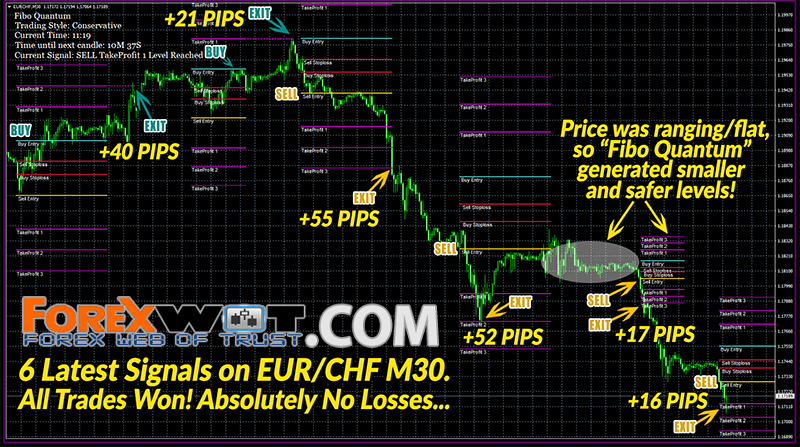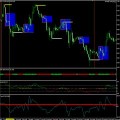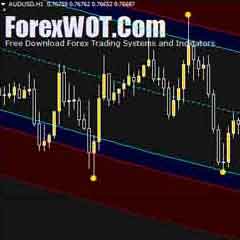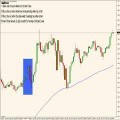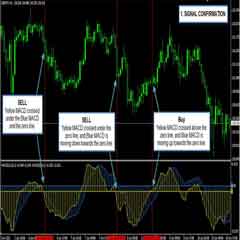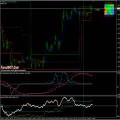THE BEST and THE BIGGEST lessons you have to learn as a forex-currency trader – Trading has never been a prediction game. First of all because nobody can predict the future. Trading is a follower game. As a trader you have to sit, observe and try to identify the psychology of the big traders on the market and follow them. Traders follow the movement but never predict the movement.
Law of large number and how it impacts your trading
Before anything else, you must understand the law of large number.

Wait, what’s that?….
The law of large numbers is a theorem that describes the result of performing the same experiment a large number of times. According to the law, the average of the results obtained from a large number of trials should be close to the expected value, and will tend to become closer as more trials are performed.
– Probability Theory
For a trader, this means you need a large number of trades for your edge to play out.
You will not be consistently profitable every week, taking 5 trades a month.
Why?
Because according to the law of large number, results are random in the short run, but will be closer to the expected value in the long run.
Since the law of large number requires a certain number of trades for your edge to play out, how does it impact your trading?
What is consistency?
Since the law of large number requires a certain number of trades for your edge to play out, how does it impact your trading?
High-frequency trading – Trading at very high frequency, like 10,000 trades a month. You can expect to be profitable for most of the months, or even every day like Virtu Financial (But I wouldn’t recommend this route if you’re a retail trader as you need the right technology and deep pockets).
Day trader – Trading an average of 3 – 5 times a day, you can expect to be profitable in most of the quarters.
Swing/position trader – Trading an average of 5 – 15 times a month, you can expect to be profitable for most of the years.
The more trades you put on during a shorter period of time, the faster your edge will play out.
But without an edge in the markets, the more trades you put on leads to blowing up your account even faster.
Understand this and you’re ahead of 90% of traders out there.
Next:
Find a trading style that suits you
Not only that, it has to also fit your schedule. If you have a full-time job, it does not make sense to be a day trader.
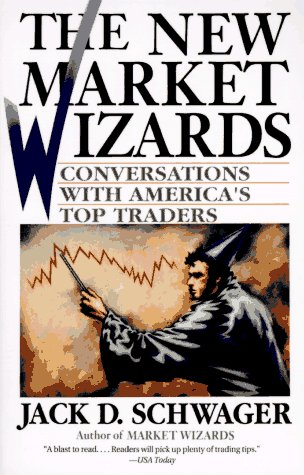
Go read Market Wizards. It contains an interview with successful traders of various trading styles.
This way you’ll learn what works in the market, and pick one trading style that suits you.
Once you’ve decided on one, find out everything you can about it. Let’s assume you want to be a trend follower.
You can look at:
Academic research papers – You can google academic research papers. E.g. Search for ‘trend following academic research papers’. These are useful research papers you can explore.
Books – Search for books relevant to your trading style. E.g. Search for ‘trend following’ on Amazon. Here’s a list of books that I would highly recommend.
YouTube – Watch videos and learn the thought process of other traders. E.g. Search for ‘trend following’ on YouTube.
Google – You can always find a hidden gem here. Like interviews, podcasts, and blogs related to trend following.
Social Media – You can connect with traders who are successful. Follow them on Twitter and Facebook etc.
Now:
Use all these information you have and build a trading plan.
Here’s how…
A trading plan is a structure or a set of guidelines, that defines your trading.
It removes subjectivity in your trading, minimizes the roller coaster emotions, and keeps you prepared at all times.
So, how do you develop a trading plan?…..
Below are 7 essential questions that every trading plan must answer:
1 – Time frame traded
You must know the time frame you are executing your trades.
For day traders, you would be trading lower time frames like 5 minutes. For swing/position trader, you would be trading higher time frames like 4 hours or daily.
2 – Markets traded
You must know which markets you will be trading. Would you trade all markets, or just trade a certain sector?
3 – Risk management
You must know how much risk you are putting on each trade, and how it will change as your trading capital increase/decrease over time. What % of your account will you risk on each trade?
4 – What are the conditions of your trading setup?
You need to define what is the exact market condition required before you put on a trade.
5 – When to enter
You need to define how exactly will you enter a trade.
6 – When to exit if you are wrong
Whenever you enter a trade, you must know the point at which you are wrong, and get out. Which is the point on the chart that will prove your wrong?
7 – When to exit if you are right
When the price goes in your favor, you must know how you will exit your trade. Would you trail your stops or set a profit target ahead of time? Would you look to take partial or full profit?
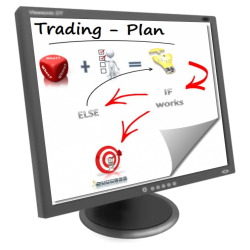
Disclaimer:
Below is a sample trading plan that I came up with randomly, please do your own due diligence.
I like to use the IF THEN syntax in my trading plan. It helps keep me more objective with lesser room for discretion.
If I am trading, then I will only trade Eurusd and Audusd. (The markets you are trading)
If I place a trade, then I will not lose more than 1% of my account. (Your risk management)
If 100 EMA is above 200 EMA on daily, then the trend is bullish. (Conditions before entering a trade and time frame you are trading)
If the trend is bullish, then identify an area of support where the price can retrace to. (Conditions before entering a trade)
If price retrace to your area of support, then wait for a higher close. (Conditions before entering a trade)
If price closes higher, then enter long at next candle open. (Entry)
If you are long, then place your stop loss below the low of the candle, and take profit at swing high. (Exit when you’re wrong, and when you’re right)
Execute your trading plan
Once you’ve completed your trading plan, forward test it in the live markets.
You can do it on demo or small live account.
I would suggest trading micro lots on a live account, to take into account how psychology affects your trading.
You have to execute your trades consistently according to your trading plan. This is where your discipline comes into play, only taking trading setups that meet your trading plan.
Warning 1: If you entering trades based on how you feel instead of following your trading plan, then it would be impossible to tell whether your trading plan has an edge in the markets.
Warning 2: Do not change your trading plan, or jump onto another trading system when you are having a series of losses. I know you are tempted to do so.
Recall the law of large number?
Results are random in the short run, but will be closer to the expected value in the long run.
This means if you change your trading plan after a few losing trades, you’d never know if you have an edge in the markets. And you will be running around in circles forever!
I would recommend having a sample size of at least 100 trades, before deciding whether your trading plan has an edge in the markets.
Record your trades to remain objective
Executing your trades consistently isn’t enough. You must record down your trades to collect relevant statistical data.
Why?
So you can make an objective conclusion and know whether your trading plan has an edge in the markets.
You can easily do this on an excel spreadsheet with the relevant metrics below:
Date – Date when your trade is entered
Time Frame – The time frame you are entering on
Setup – The trading setup that triggers your entry
Product – Financial product that you trade E.g. Apple, Gold, Eur/Usd
Lots – Position size you entered
Long/short – Direction of your trade
Tick value – Value per pip. E.g. 1 standard lot of Eurusd is $10/pip
Price In – Price you enter your trade
Price Out – Price you exit, at profit or loss
Stop loss – Price where you will exit if your trade is wrong
Profit & loss – Profit or loss from this trade
Initial Risk in $ – Nominal risk value of this trade
R – Your initial risk of this trade. E.g If you made 2 times your initial risk, you made 2R.
Review your trades and find your edge
After you have a sample size of 100 trades, you can look to review your statistics to see whether you have an edge in the markets.
The most important trading equation you must know:
Expectancy = (Winning % * Average win) – (Losing % * Average loss) – (Commission + slippage)
If you have a positive expectancy, congratulations! You have an edge in the markets.
But what if you don’t have?
You can consider:
Increase your winning % – Be more selective with your entries. Look for other confluence factors that can be added to your trading plan.
Increase your average win – Ride your winners longer. You can do this by trailing your profits as price moves in your favor.
Decrease your average loss – Cut your losses. You can do this by cutting your losers quickly.
Note:
If you do not have an edge in the markets, increasing your frequency of trades will not make you profitable. It will only make you lose faster than before.
Likewise, reducing your risk per trade will still cause you to lose, but at a slower pace.
Once you’ve identified the issues and come up with a solution, repeat the entire process over again. Develop >> Execute >> Record >> Review
Also, if you want to be the best at forex, you should check out this BOOK which helped me the most.
I hope this will shed some light on what it takes to become a consistently profitable trader.
.
BONUS : 3 High Accuracy Forex Trading Systems
.
- Renko Bar Chart and Momentum Trading System
High Accuracy Renko Bar Chart Trading System. I will tell how to Correctly Identify Forex Trend with Renko Bar Chart Trading System – You might be familiar with renko charts. These are simply boxes that are plotted when price closes an “x” number of pips above or below the previous close.
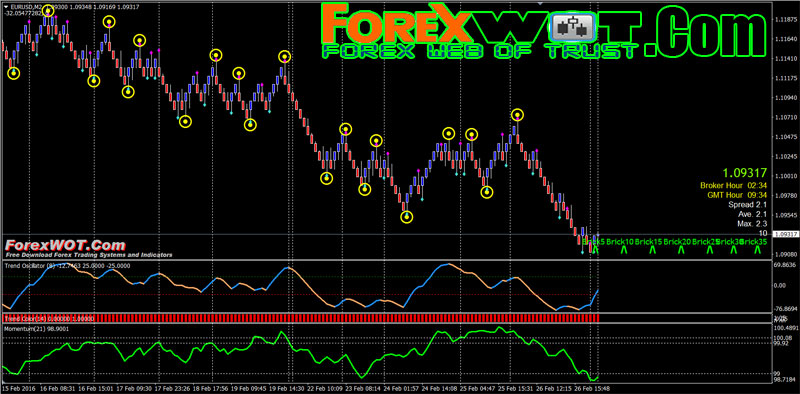
[sociallocker]
[/sociallocker]
This charting methodology differs from the more traditional candlestick or bar charts. So while you might find renko charts to be different in their appearance, they have a unique capability of showing you the trends as well as help you to easily identify support and resistance levels.
- Forex Double MACD Support Resistance Trading System with Force Index Indicator
How to Become A Profitable Forex Trader with Forex Double MACD Support Resistance Trading System. The Double MACD is an indicator that compares the Signal lines of 2 MACDs. This comparison can cause a much faster reaction than the normal MACD – less lag. Yet, the fast reaction is not such that it over-reacts.
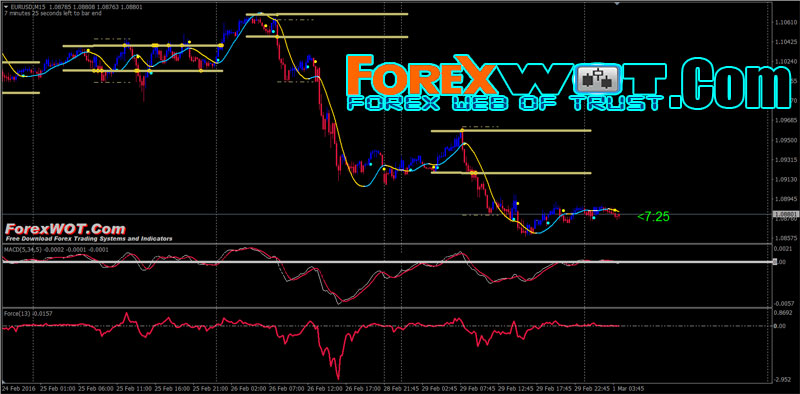
This indicator, like the normal MACD, can be slightly erratic. Someone might add a couple of additional Signal lines to smooth it, for clarity
- How to Maximize Your Forex Profits with Step Moving Average Trading and Momentum System
Advanced forex – How to Maximize Your Forex Profits with Step Moving Average Trading and Momentum System. Forex trading is the most popular way to earn extra money from home this century, but people rarely know how to maximize its benefits and limit its risks effectively enough to achieve a success rate of 80%.

Step Moving averages (Step MA) smooth the price data to form a trend following indicator. They do not predict price direction, but rather define the current direction with a lag. Step Moving averages lag because they are based on past prices. Despite this lag, step moving averages help smooth price action and filter out the noise.

